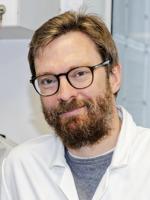
RAE Chair in Emerging Technologies
Professor of Energy and Sustainability
Our research
The Reisner laboratory develops new concepts and technologies for the conversion of solar energy and renewable electricity into sustainable fuels and chemicals for a circular economy. Thus, we explore chemical aspects of energy and sustainability, in particular photo- and electrocatalysis and the interface of synthetic chemistry, materials and nano-science, chemical biology and engineering. Central themes of our cross-disciplinary and collaborative approach are the development of processes for the upcycling of plastic and biomass waste as well as the use of carbon dioxide and water to produce green fuels and chemicals for a sustainable future.
More information can be found on our group website.
Keywords: Solar fuels, solar chemicals, artificial photosynthesis, biohybrid materials, water and CO2 splitting, small molecule activation, catalysis, metalloenzymes, microbiology, biomimetic chemistry, bio-inorganic chemistry, synthetic chemistry, electrochemistry, photoelectrochemistry, materials Chemistry, nanotechnology, functional and energy materials.
See how the people in Bricktown benefit from Reisner's research
Plastic: The new fantastic
Mimicking nature to create a green fuel
Professor Reisner discusses his research
Take a tour of the Reisner Lab
Publications
- ‹ previous
- Page 20

